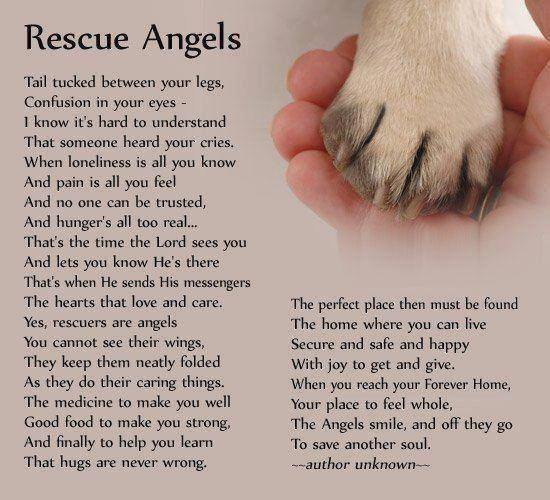Dogs And Puppies Need Your Help
Having foster homes is very critical to an animal rescue simply because it helps Save Lives. Foster homes are crucial when 90% of the animal rescue’s in-take are dogs and puppies pulled from high kill shelters and pounds. There are more dogs and puppies needing rescue than the rescues can take in due to lack of foster homes. The more foster homes a rescue has, the more dogs and puppies that can be saved from being euthanized and given a second chance to find a wonderful loving family to love them for the rest of their days.
How To Get Started Fostering A Pet
What does fostering a pet entail you ask? It is quite easy. All the rescue needs for you to do is 1.) open your home and your heart to the animal, 2.) provide love, a safe haven and socialization, 3.) be able to transport the pet where ever it may need to go (such as the vet or an adoption event) and finally to love love love getting licks and playing! It is that simple! In return for the above, the animal rescue will provide the vet care and food for the pet while it is in your care.
Fostering Through An Animal Rescue Is Specific To The Pet
Don’t get me wrong and please understand that every rescued animal is different in personality and socialization. Some of the animals may not like children. That animal would need to go into a foster home without small children or any children at all. Some animals may have a fear of men. That animal would need to be socialized with men to work on the fear of being around men, which may result in a foster home without men. Or an animal may not like other animals…so a foster where that animal will be the only animal may be needed. There are many different situations with being a foster home but only one thing will always remain the same with each animal you foster–their love for you!
FAQ About Fostering A Pet
In case you have some questions, here are some Q & A’s that will hopefully help.
- Can foster parents adopt their foster pets?
Yes! As long as foster parents meet the shelter requirements that are necessary for adopting, foster parents have the first choice to adopt their foster pets, unless otherwise specified.
- Are foster animals contagious? Will my pets or my health be jeopardized?
It is always a health risk to expose your animal to other animals, whether at the off-leash areas, the vet waiting room or other common animal areas. If your pets are current on their vaccinations, maintain healthy diets and lifestyles, and are not immune compromised, then the health risk should be minimal.
If someone in your household is immune compromised, consult the doctor before fostering. If you are pregnant (or someone in your house is (or plan to become) pregnant, talk to your doctor before fostering cats. You may need to take some special precautions during your pregnancy.
- Are purchases made for foster care tax-deductible?
Purchases made for foster care may be considered donations to the shelter and would be tax-deductible. Please check with your shelter or rescue group regarding their tax-deductible status. If the organization is a non-profit, keep your receipts.
- What do I do if my foster animal needs veterinary care?
It’s always best to speak with the specific shelter or rescue about how to handle medical emergencies, as each group may have a preferred way of managing crisis, require notification prior to treatment or have a preferred veterinarian. I’ve included some rough guidelines below, but it’s always best to sketch out a plan ahead of time with your foster contact.
Animal Rescue Emergencies
If you have an emergency during business hours, please call the shelter or rescue directly. If something happens after hours:
- Restrain the animal to prevent it from hurting itself or anyone in the area.
- Evaluate the situation and need for assistance.
- Is the shelter or rescue’s veterinary office open for business with vet staff available?
- Call the shelter.
- Get the animal in to see the vet immediately.
- Is the animal’s life in imminent danger? Is the animal’s airway obstructed or is the animal having trouble breathing? Does the animal have any broken bones or open wounds?
- Call for emergency clearance.
- Get the animal in to see the vet immediately.
- Is the animal running a fever of 104F or greater?
- Look at the animal’s gums. Are they white or healthy pink? Is the animal eating or drinking?
- Is the animal able to urinate and defecate? Look at the animal’s stool. Is there blood in the feces or urine? Are there obvious parasites present?
- If the situation is not an emergency, call the shelter vet staff first thing on the next business day.
- If emergency medical attention is needed, or if you are uncertain, call for emergency clearance. Have the animal’s name, impound number and any information about the situation available so the staff can advise you of the appropriate steps.
- Once you are cleared to go to the emergency veterinary clinic, a shelter representative will contact their office and let them know that you are coming. In many cases, the medical treatment of the animal will be billed to the shelter. However, some rescue groups do ask you to pay and be reimbursed.
- ALWAYS check with the shelter staff before making an appointment with a veterinary clinic. Without proper clearance, the shelter cannot reimburse you for any medical costs.
- What does fostering a dog involve?
When you foster, you agree to take a homeless dog into your home and give him or her love, care and attention, either for a predetermined period of time or until the dog is adopted.
- Why do adoption groups need foster homes?
There are many reasons a dog might need foster care. Some of the most common include:
- A rescue group doesn’t have a physical shelter and depends on foster homes to care for dogs until suitable homes are found.
- A puppy is too young to be adopted and needs a safe place to stay until he or she is old enough to go to a forever home.
- A dog is recovering from surgery, illness or injury and needs a safe place to recuperate.
- A dog is showing signs of stress such as pacing or hiding in the shelter.
- A dog has not lived in a home before or has not had much contact with people and needs to be socialized.
- The shelter is running out of room for adoptable dogs.
- Why should I foster a dog?
Fostering a dog is one of the most rewarding experiences you can have (other than adopting, of course). By taking an animal in need temporarily into your home you’re:
- Freeing up a spot so the shelter or rescue can take in another dog.
- Giving your foster dog the time he needs to be ready for adoption.
- Helping the shelter or rescue learn more about the dog so he can end up in the best home possible.
- Socializing the dog to a home environment and possibly getting him used to being around other pets and different types of people.
How You Can Get Started Fostering A Pet
Now, you are probably wondering how to go about becoming a foster home. That is simple too! Just find a rescue or shelter on Petfinder.com and view their websites for the foster application. Once you apply to become a foster home you will meet a rescue supervisor who will go through the whole foster home process with you.
You are not only giving an animal a new life but you are helping to save a life. For more questions please don’t hesitate to contact me through my email below or by phone at: 513-615-6726.

Robyn Moore, our Rescue Editor, is the Founder and Owner of Lil’ Paw Prints Animal Rescue Haven, which she founded in 2006. She has lived in the Loveland, Ohio area for over 30 years. Robyn loves the outdoors and traveling. She also adores animals and helps them every way she can. You can view her rescue’s website at www.lilpawprintsanimalrescuehaven.org. You can contact her at robynm@lilpawprintsanimalrescuehaven.org





